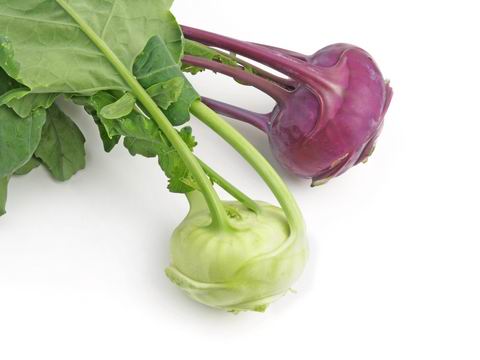
Often described as a little Sputnik, Kohlrabi may look like something from out of this world, but this member of the cabbage family is very down to earth. Growing just above-ground, Kohlrabi is an easy and prolific vegetable to grow, adapting well to various climates and geographic areas.
Some say Kohlrabi was popularly grown throughout the latter days of the Roman Empire, while others contend it is a relatively new produce, emerging in Northern Europe during the 1550s, with its popularity becoming well-grounded in Germany, Britain, Italy, Spain and the Mediterranean by the early 1600s.
From there, it took another 200 years to find its way to North America. And even though two centuries have gone by, Kohlrabi is still often treated like a foreign entity. Although it’s not a cross between the two, Kohlrabi is named from the German word, ‘kohl,’ meaning cabbage, and ‘rube,’ meaning turnip. There are two main types of Kohlrabi, the most popular being light green, although the purple variety is sweeter.
When it comes to Kohlrabi, smaller is definitely better, providing a superior taste and texture. Once Kohlrabi grows larger than 2” in diameter, stronger flavours and a woody texture begin to develop.
Kohlrabi has a crisp, juicy crunch with a taste of broccoli stem, a hint of cabbage and mild radish. When eating raw, trim the outer green leaves and peel the skin. Chop, grate or slice and add to coleslaw and salads, vegetable platters or use as a substitute for cabbage, radishes and water chestnuts. To liven up soups, stews or stir-fries, add some cubed Kohlrabi near the end of cooking so it keeps its crunch and distinctive flavour.
Fresh Kohlrabi stores up to a month in the fridge, or 12 months in the freezer, providing it has been blanched.
Kohlrabi has just 40 calories a cup, is high in fibre, and a good source of potassium, calcium, folic acid and vitamins A and C.
And the more familiar you get with Kohlrabi; the less of a stranger and more of a friend it will become.
